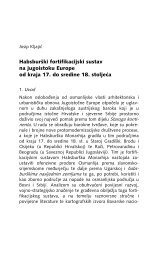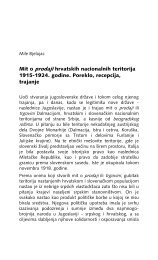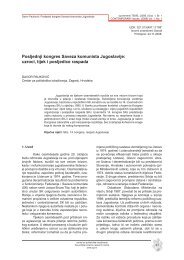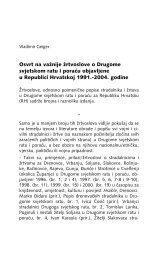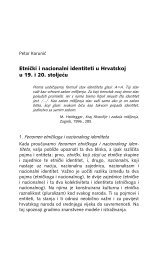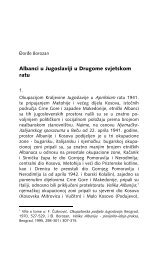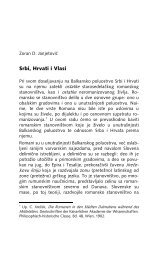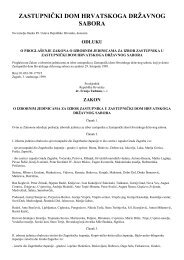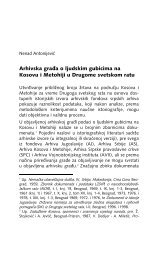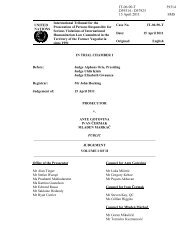ISSN 1847-2397 godište II broj 1 2009. | volume II number 1 2009
ISSN 1847-2397 godište II broj 1 2009. | volume II number 1 2009
ISSN 1847-2397 godište II broj 1 2009. | volume II number 1 2009
- No tags were found...
Create successful ePaper yourself
Turn your PDF publications into a flip-book with our unique Google optimized e-Paper software.
Jamshed Khattak, Aslam Khan: Understanding Female College Studentssuvremene TEME, (<strong><strong>2009</strong>.</strong>) God. 2, Br. 1CONTEMPORARY issues, (<strong>2009</strong>) Vol. 2, No. 17.2. Research ModelIt is apt at this stage to develop a model of the study which is discussed hereunder:Consequences andimpact of televisionadvertisingEthicalEconomicSocialFemale students’general attitudetowards televisionadvertisingRegulatoryThe judgment of students about the consequences and impacts of the television advertising(ethical, economic, social and regulatory) are taken as the independent variables, while the general attitudeof female students towards the television advertising is taken as the dependent variable.8. Research Methodology8.1. SampleThe targeted population was limited tofemale college students, with the aim of understandingthe mind-set of female college studentstowards television advertising. A national investigationwas performed in colleges of the six metropolitans(Karachi, Lahore, Quetta, Peshawar,Rawalpindi and Islamabad). A total of 400 questionnaireswere distributed, out of which 299questionnaires were retrieved. The responserate was 75%.(a) Ethical consequences (deception,puffery, sexual appeals)(b) Social consequences (needlessproducts, clutter, materialisms,undesirable values)(c) Advertising regulations (harmfulproducts, exiting regulations,proliferation)8.2. Measurement of the VariablesBauer and Greyser (1968) adaptedLarkin’s (1977) items to study attitudes towardadvertising. Consequently, several other studies(Anderson et al., 1978; Andrews, 1989; Greyserand Reece, 1971; Haller, 1974; Schutz andCasey, 1981; Triff et al., 1987) used the samescale. The study has considered measures tojudge the following three attitudinal areas usingLarkin’s scale:The General Attitude scale (good,helpful, believable) is selected from Pollay andMittal (1993) to measure the general attitude offemale college students towards television advertising.To measure the response, the five pointLikert Scale from strongly disagree to stronglyagree was devised. The demographic informationlike gender, age and class of the respondentswere also sought through the questionnaire.centar za politološka istraživanjathe political science research centrewww.cpi.hr10



